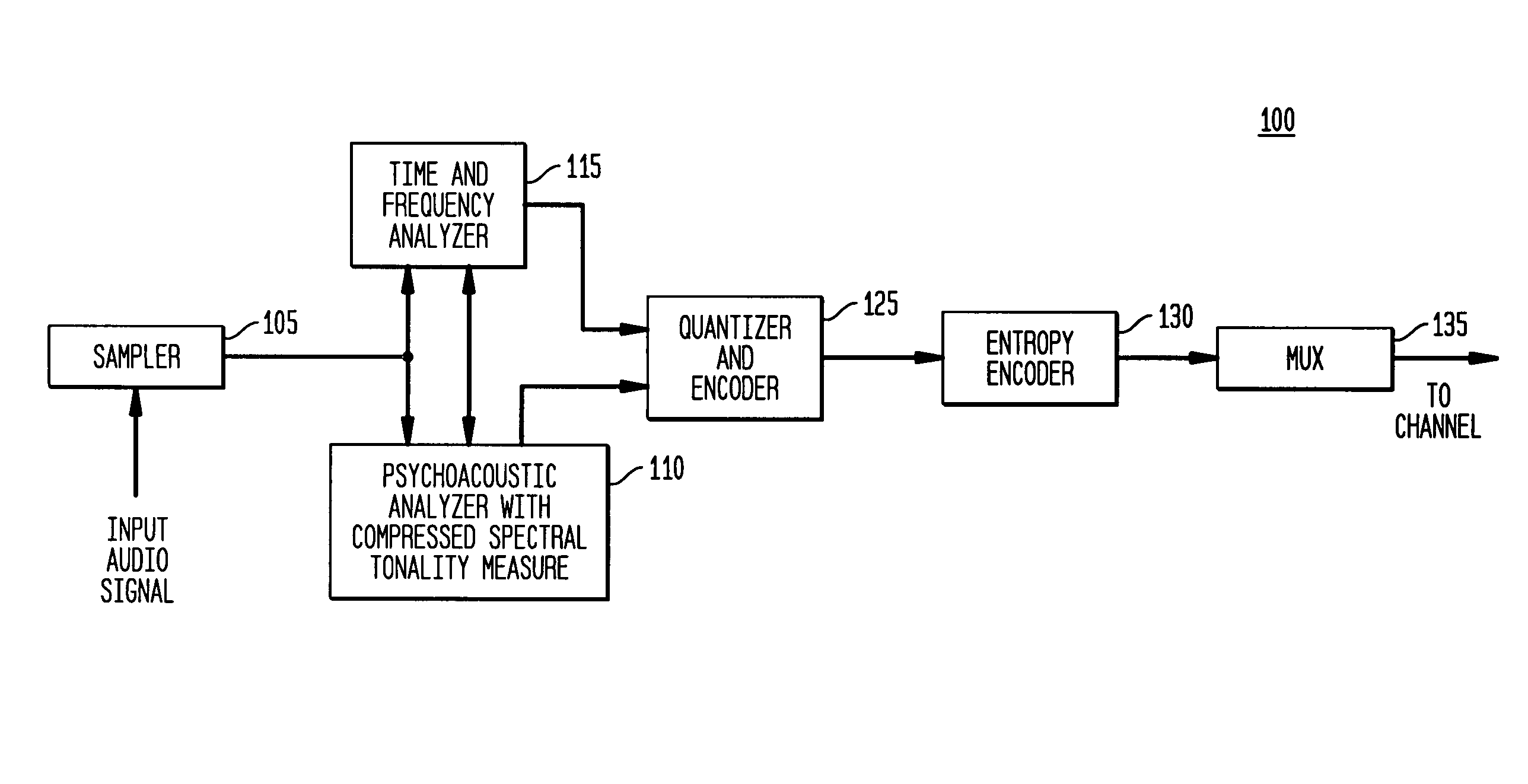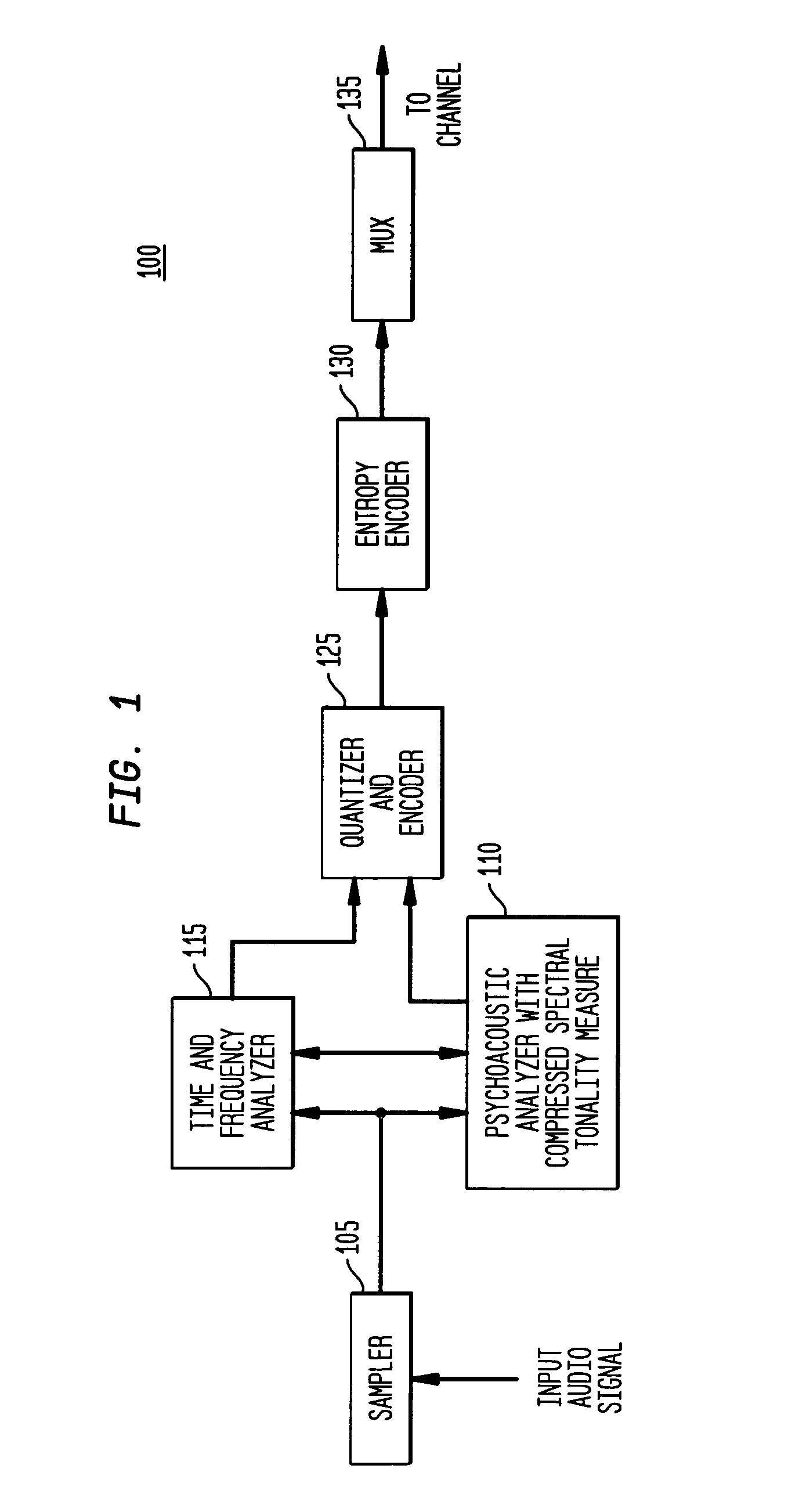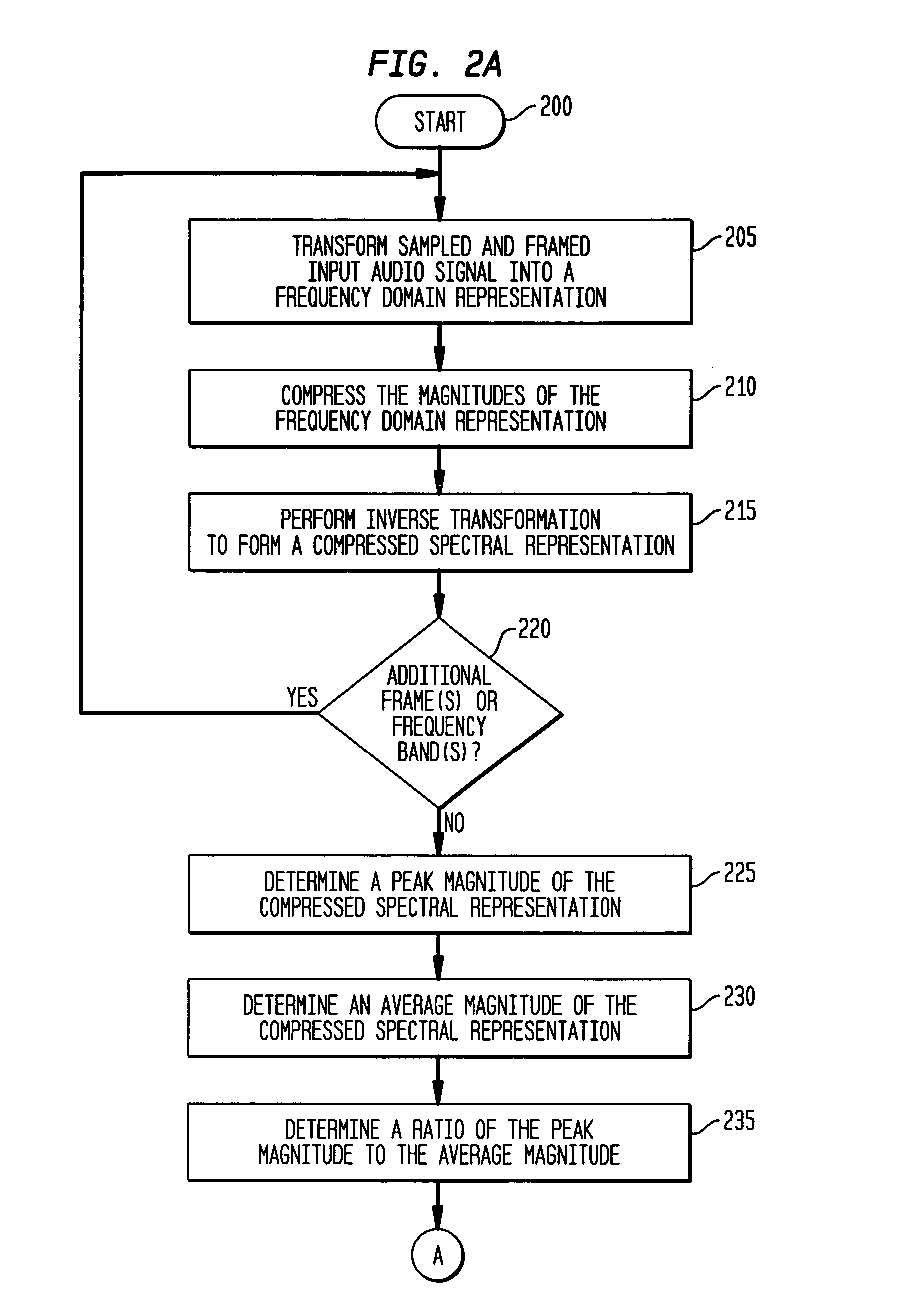Tonal analysis for perceptual audio coding using a compressed spectral representation
a perceptual audio and compression technology, applied in the field of perceptual coding of input audio signals, can solve the problems of unreliable prior art methods, if the input spectrum is largely harmonic, and prior art methods also have proved unreliabl
- Summary
- Abstract
- Description
- Claims
- Application Information
AI Technical Summary
Problems solved by technology
Method used
Image
Examples
Embodiment Construction
[0023]While the present invention is susceptible of embodiment in many different forms, there are shown in the drawings and will be described herein in detail specific embodiments thereof, with the understanding that the present disclosure is to be considered as an exemplification of the principles of the invention and is not intended to limit the invention to the specific embodiments illustrated.
[0024]The present invention provides a new and more accurate measure of the tonality of an input audio signal using a measure of the harmonicity of the input audio signal. The tonality of the input audio signal, as measured by its harmonicity, is utilized to select an appropriate masked threshold for allowable distortion levels in perceptual audio coding. As discussed in greater detail below, in accordance with the present invention, an input audio signal (x(t)) is transformed into a frequency domain representation (X(f)), followed by magnitude compression of the frequency domain representa...
PUM
 Login to View More
Login to View More Abstract
Description
Claims
Application Information
 Login to View More
Login to View More - R&D
- Intellectual Property
- Life Sciences
- Materials
- Tech Scout
- Unparalleled Data Quality
- Higher Quality Content
- 60% Fewer Hallucinations
Browse by: Latest US Patents, China's latest patents, Technical Efficacy Thesaurus, Application Domain, Technology Topic, Popular Technical Reports.
© 2025 PatSnap. All rights reserved.Legal|Privacy policy|Modern Slavery Act Transparency Statement|Sitemap|About US| Contact US: help@patsnap.com



